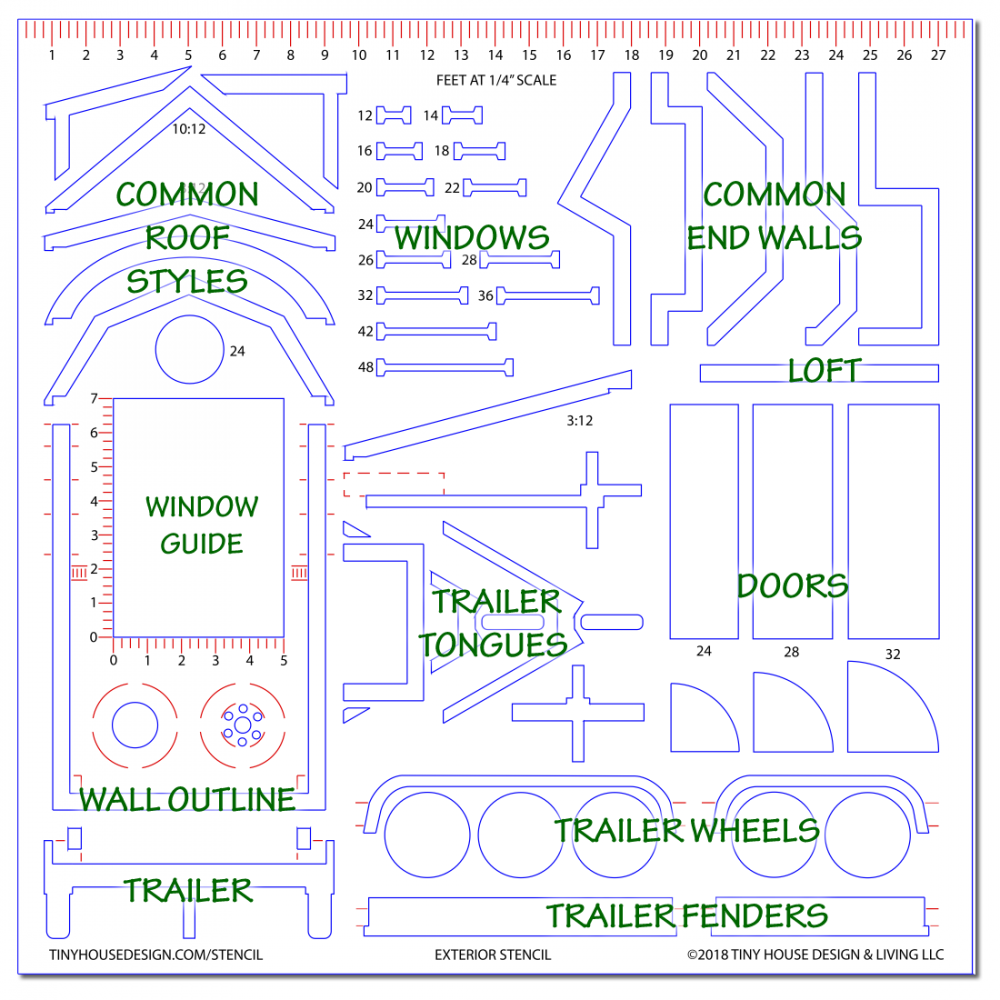Draw paper floor plan blank tiny house tinyhousedesign kickstarter backers campaign
Table of Contents
Table of Contents
If you’re thinking of building a tiny house, one of the most critical steps is drawing a floor plan. Whether you’re a professional architect or just starting, knowing how to draw a tiny house floor plan is essential. A well-designed floor plan will ensure that you have a functional and livable space that meets your needs and makes the most of the available space. In this blog post, we’ll explore the steps necessary to create your own tiny house floor plan.
The Pain Points of Drawing Tiny House Floor Plans
Designing a floor plan for a tiny house can be a real challenge. Lack of space is the most obvious hurdle, and finding ways to maximize every square foot is crucial. Suppose you’re new to design and architecture, learning the essential principles of design and understanding building codes may seem daunting. Moreover, designing a functional, aesthetically pleasing, and affordable house requires creativity, precision, and patience.
How to Draw a Tiny House Floor Plan: The Ultimate Guide
The first step in designing your floor plan is to evaluate your needs, lifestyle, and goals. Decide on the number of sleeping areas, if any, you’ll require based on the number of people who will be living in the home. Determine whether you want a loft or a single floor plan, how you’ll utilize the space, and what features you want. Don’t hesitate to browse online resources, look for inspiration, and consider the pros and cons of other tiny home designs.
Once you have a rough idea of your layout, sketch your plan on paper. You can use grid paper or print a free floor plan template to make it easier. Be sure to include measurements that are to scale and label each room or area. Consider feasible zoning, placement of entryways and windows, and accessibility. Determine what direction the home should face, whether you need more privacy, and any environmental factors that could influence the design.
After drafting your sketch, refine your drawing using a software program or drawing tool. There are several free and affordable tools online that you can use to create your design. Remember to add details to your plan, such as furniture placement, electrical and plumbing systems, and any other features you want. At this point, consider seeking professional input in case an expert sees something you didn’t.
Main Points Summarized
In summary, when drawing a tiny house floor plan:
- Evaluate your needs, lifestyle and goals
- Sketch your plan on paper
- Refine your drawing using a software program or drawing tool
- Seek professional input to ensure your design is functional and meets building codes
My Personal Experience Drawing a Tiny House Floor Plan
When I decided to build my own tiny home, I was excited and nervous at the same time. I had a basic idea of what I wanted, but I didn’t want to mess anything up. After doing some research and consulting with an architect, I drew a rough sketch and decided to use a 3D design tool to refine the layout. It was challenging, but also a lot of fun to see my vision come to life on the screen. I made several changes along the way, but the end result was a functional and beautiful tiny house that I love.
Using 3D Design Tools to Draw Tiny House Floor Plans
3D design tools can be a great asset when drawing tiny house floor plans. Online tools like SketchUp and FloorPlanner make it easy to create a detailed and realistic design. You can add furniture and other decor to get a better sense of the space and how it will look once built. These tools can save you time and frustration in the design process, but remember to keep your layout simple and functional.
Additional Tips for Drawing Tiny House Floor Plans
A few other tips to keep in mind when designing a tiny house floor plan include:
- Use multi-functional furniture to save space
- Focus on maximizing vertical wall space
- Consider built-in storage solutions
- Make payment plans before purchasing building materials
- Be cautious of increasing overall height or width, which can affect the cost of transportation or limit parking options.
Differences Between a Regular House and Tiny House Floor Plan
While some principles apply to both tiny and regular house floor plans, a significant difference exists in the amount of usable square footage. Tiny house floor plans can be as small as 100-square-feet or less, which requires a more efficient use of space. Tiny house designs also require careful consideration of mechanical elements, such as heating and cooling, sewage and water lines, and electrical systems. In contrast, regular house plans may require more rooms, storage space, or extra wings, but can have higher ceilings, attic space or basements to account for.
Frequently Asked Questions
Q: What software programs can I use to draw a tiny house floor plan?
A: There are many free or affordable software programs available online. The most common ones include SketchUp, FloorPlanner, and Sweet Home 3D.
Q: How long does it take to create a tiny house floor plan?
A: Depending on your level of experience and the complexity of your design, drawing a tiny house floor plan can take from a couple of days to several weeks.
Q: Do I need to be an architect to design a tiny house floor plan?
A: No, but plans need to be approved by the local authorities to make sure they meet building codes. It’s advisable to get professional input or have a professional draft them to get the required approvals.
Q: How many people can fit into a tiny house?
A: Depending on the design, tiny homes typically accommodate one to four individuals comfortably. However, some designs can accommodate up to six people.
Conclusion of How to Draw a Tiny House Floor Plan
Creating your own tiny house floor plan is an exciting and rewarding process that requires patience, creativity, and a willingness to learn. By evaluating your needs, sketching, refining, and seeking professional input, you can have a functional, aesthetically pleasing, and affordable house. Using online 3D design tools, keeping your design simple, and paying attention to mechanical elements are critical steps in developing an efficient and comfortable tiny home. Do you have any questions or suggestions about drawing a tiny house floor plan? Let us know in the comments!
Gallery
How To Draw A Tiny House Floor Plan On Blank Paper – TinyHouseDesign

Photo Credit by: bing.com / draw paper floor plan blank tiny house tinyhousedesign kickstarter backers campaign
How Do You Draw A House Plan - Blue P

Photo Credit by: bing.com / tinyhousetalk 8x16 plumbing
27 Adorable Free Tiny House Floor Plans | Small House, Cottage House

Photo Credit by: bing.com / house small plans cottage tiny floor
Architecture-earthbag-tiny-house-plans-green-house-amusing-house-plans

Photo Credit by: bing.com / plans blueprints paintingvalley nizwa sencillas hous
How To Draw A Tiny House Floor Plan On Blank Paper – Tiny House Design

Photo Credit by: bing.com / tinyhousedesign





